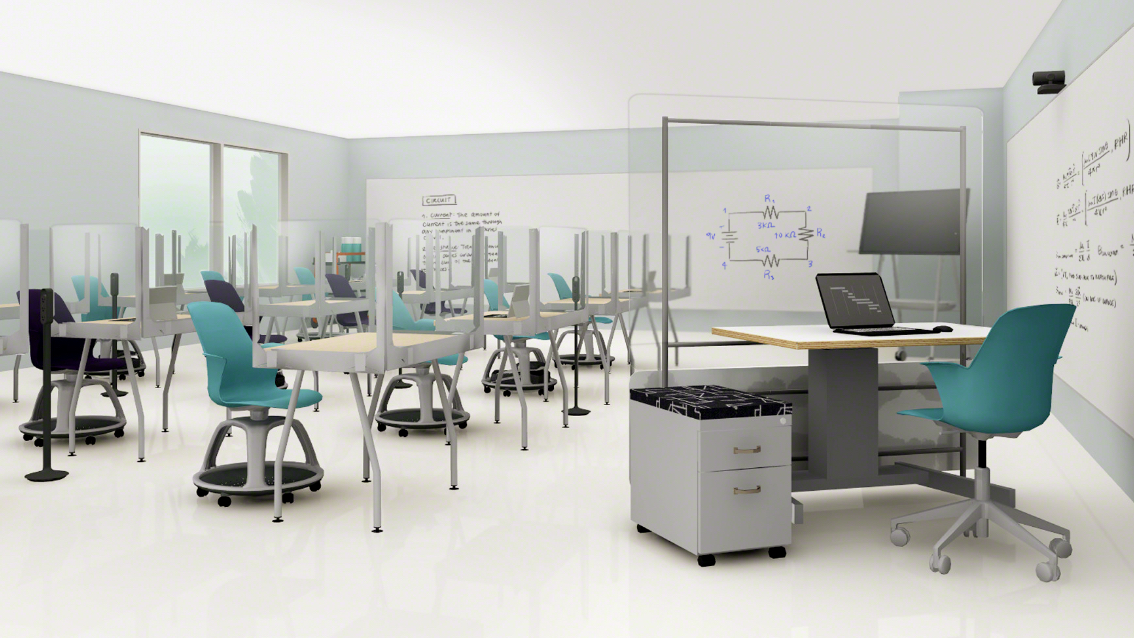THE FUTURE OF LEARNING
It’s difficult to know what the future looks like, post-pandemic. What we do know is that right now, we need to focus on keeping our children, teachers, and support staff at the schools safe. In order to move forward, children need to be with their peers and need to be back in the classrooms; and parents need to go back to work without worry that their children or family will get sick.
By: Elise Walker, Education Designer at Scott Rice
There has been a lot of talk about what we can do inside the classrooms to create a safe and healthy environment. Most of that talk has centered on providing barriers between students and the teachers. This includes acrylic screens and reduced class size. Locally, Blue Valley School District announced that the district has installed acrylic screens in all schools in its district according to KMBC:
In the short-term, barriers and screens are great for reducing the spread of pathogens, when social distancing can’t be maintained.
But what if we had a different vision for our classrooms? Something that was a little more humane and more intimate than barriers. When we think of school, we think of collaboration and active learning, with the ability to move freely through spaces and learn from our environments.
As research has suggested, it is safer to be around others in outdoor spaces, than it is indoors – as air flows freely and does not get recycled through a space. With the use of outdoor classrooms, in addition to socially distanced spaces inside the school walls, students will benefit from more flexibility, access to nature and fresh air, exploration of the natural world, as well as more collaborative learning.
If we take inspiration from Place Based Education (PBE), which according to Promise of Place, is curriculum that:
“immerses students in local heritage, cultures, landscapes, opportunities and experiences, using these as a foundation for the study of language arts, mathematics, social studies, science and other subjects”,
Students can not only benefit from being outdoors and in nature, but schools can accommodate more children each day. PBE takes students out of a traditional classroom and into nature and the community, thus expanding the boundaries of their learning. In practice, outdoor classrooms may also come with challenges – space, technology and outdoor friendly furniture to name a few.
For schools located in the suburbs – there is plenty of outdoor space on the school grounds, so this would be easy to implement whereas schools in a more urban environment, there is more limited outdoor space, but can potentially utilize parking lots and closed off streets. Local parks and open spaces within walking distance to the school may also be a great resource.
A mix of new and existing furniture for outdoor use will need to be:
- Flexible
- Mobile
- Outdoor friendly
All you need is:
- Picnic tables
- Mobile whiteboards
- Picnic tables
- Benches, seat cushions, cubes
- Tree stumps
- Student built furniture – hands on project, team building
- Tents (provided by community/school district?)
SOME OF OUR FAVORITE OUTDOOR PRODUCTS




GREAT READS ABOUT OUTDOOR LEARNING




THOUGHT STARTERS








